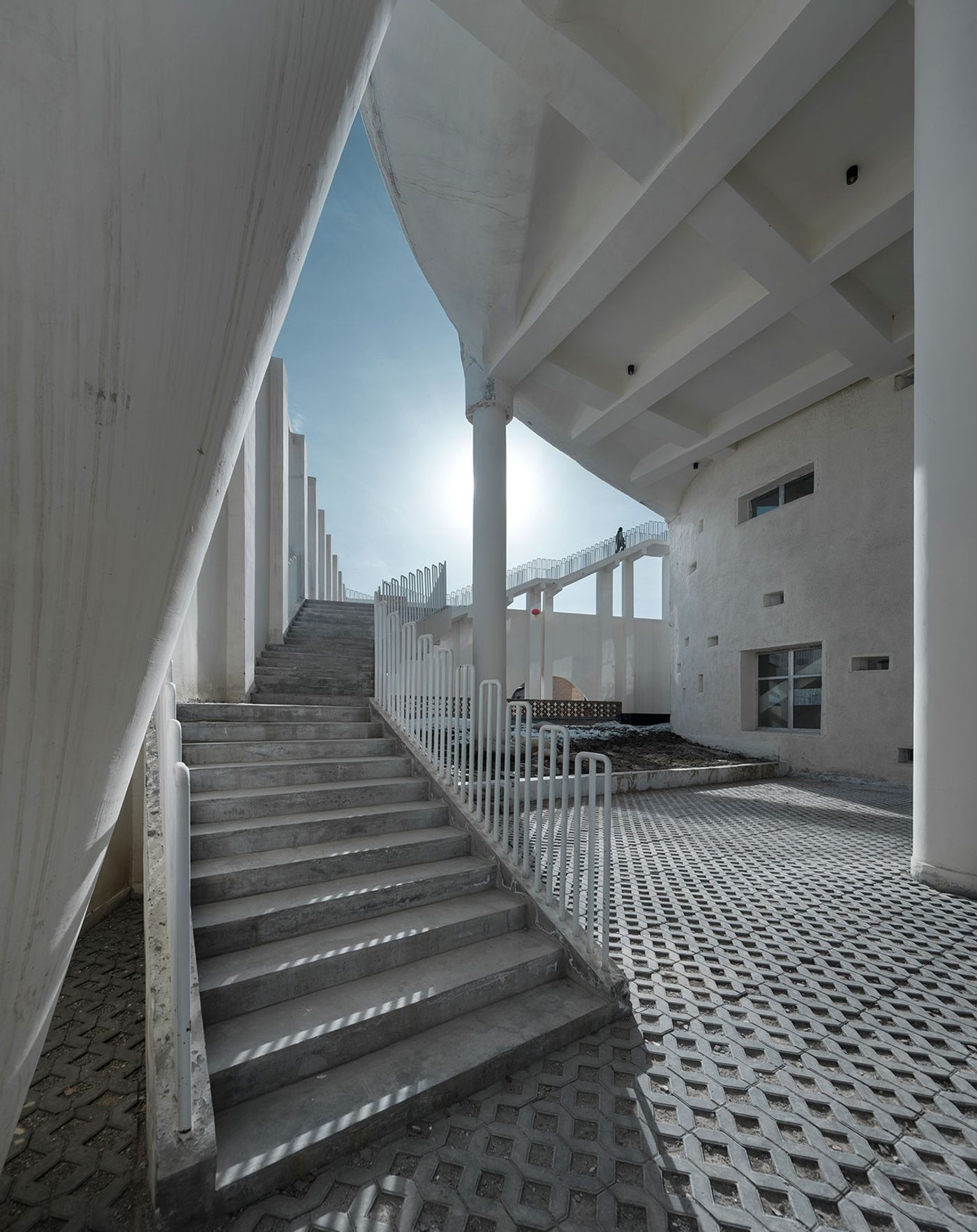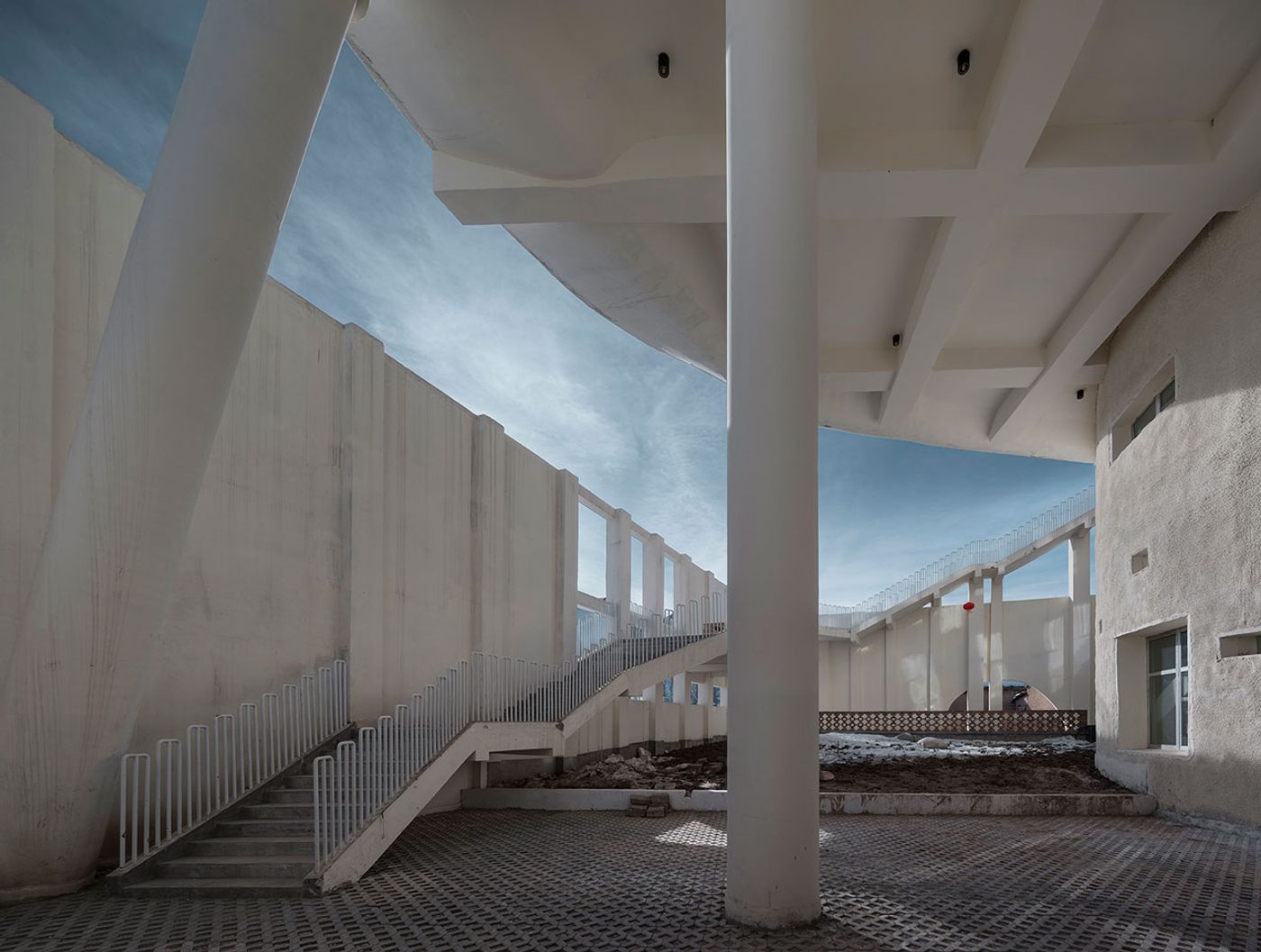
Gobi Desert Beauty: The Museum of Western Regions in Xinjiang, China
Words by Alexander Mordoudack
Location
Xinjiang, China
Gobi Desert Beauty: The Museum of Western Regions in Xinjiang, China
Words by Alexander Mordoudack
Xinjiang, China
Xinjiang, China
Location
Among the design principles that the architects of the Museum of Western Regions in China’s Baijiangou village, in Xinjiang, mention, this one probably stands out the most: “Good-looking is not beauty, and even beauty often lasts for a short while with the shift of aesthetic trends. A pleasant and well-adapted building with multiple functions is a good building, and durability is a synonym of history, symbol and localism. It is preferable for a house in the desert hinterland to emerge in harmony with the nature and perish of itself as time goes by.” Is this a manifesto? Or is it a preemptive strike against any possible criticism of the building, stemming from a western and alien sense of beauty?
In any case, there is something challenging about this building in the Gobi Desert. Even before the whole question of its aesthetics comes into play, even before it was itself constructed, this 7,700 m2 building was destined to find itself in the middle of an enigma, as the area is known as either of two opposites: To most Chinese, it is called the “Western region”, while to Westerners it is called the “East”. To be sure, the distinction is false. It depends on something which is not constantits observer’s own location. This, however, may very well be the full extent of subjectivity in anything about this building that now stands at the site of an old grain shop.

Photo by Yao Li.

Photo by Yao Li.

Photo by Yao Li.

Photo by Yao Li.
Finely attuned to its environment, the Museum faces the city to its south, and has the mountain to its back in the north, where the wall is designed to expect the strong winds for which it has been fortified. Small windows and thick walls protect against the climate’s elements, which can be scorching heat and extreme cold alike. In regards to its interior, the building has been designed as though it were made up of two distinct spaces: a guest house and a museum. The former contains a private collection, while the latter is open to the public. Traditional building materials and techniques were used, making their product one of conscious integration in history and the day-to-day reality of the region. This is not a delicate construction of sophisticated intricacy, but rather of calculated simplicity. Each of its features corresponds to either a natural need or to a custom, all the way down to the bird’s nest found to the building’s south: Swallows used to nest there before the museum’s construction, which briefly had deprived them of their home, but made sure to welcome them back. It is the same philosophy that makes the Museum look as much as an observatory, with its dome and windows, as a refuge, forbidding and inaccessible.

Architectural configuration © Xinjiang Wind Architectural Design & Research Institute Co.,Ltd.

Photo by Yao Li.

Photo by Yao Li.
There appears to be no true allegiance to either image. Most probably, the true meaning of its design is exactly that it should “emerge in harmony with the nature and perish of itself as time goes by”, as its architects suggest. Meanwhile, its skylights, stairs, environment-conscious design, in fact so many of its features, offer a meaningful pause. For the building’s aesthetic might be to look as bare as the desert, but it is nowhere near as barren.

Photo by Yao Li.

Photo by Yao Li.

Photo by Yao Li.

Photo by Yao Li.

Photo by Yao Li.

Photo by Yao Li.

Photo by Yao Li.

Photo by Yao Li.

Photo by Yao Li.

Photo by Yao Li.


